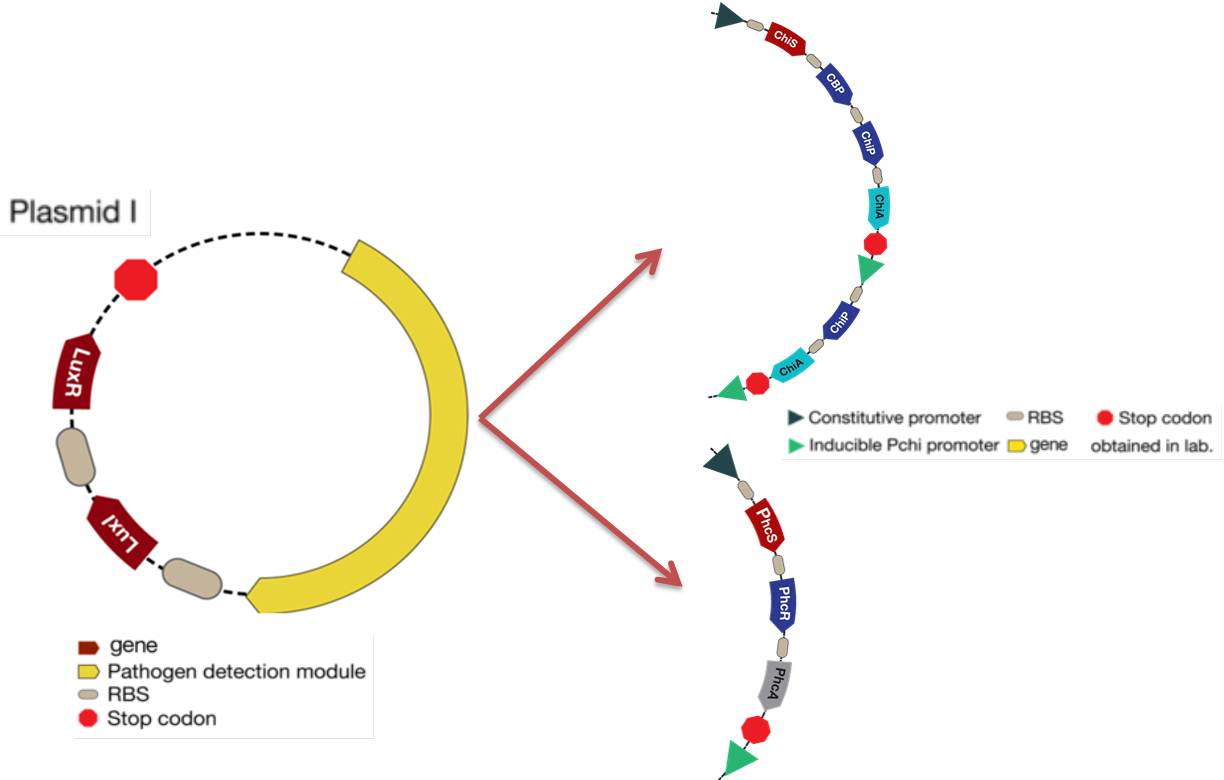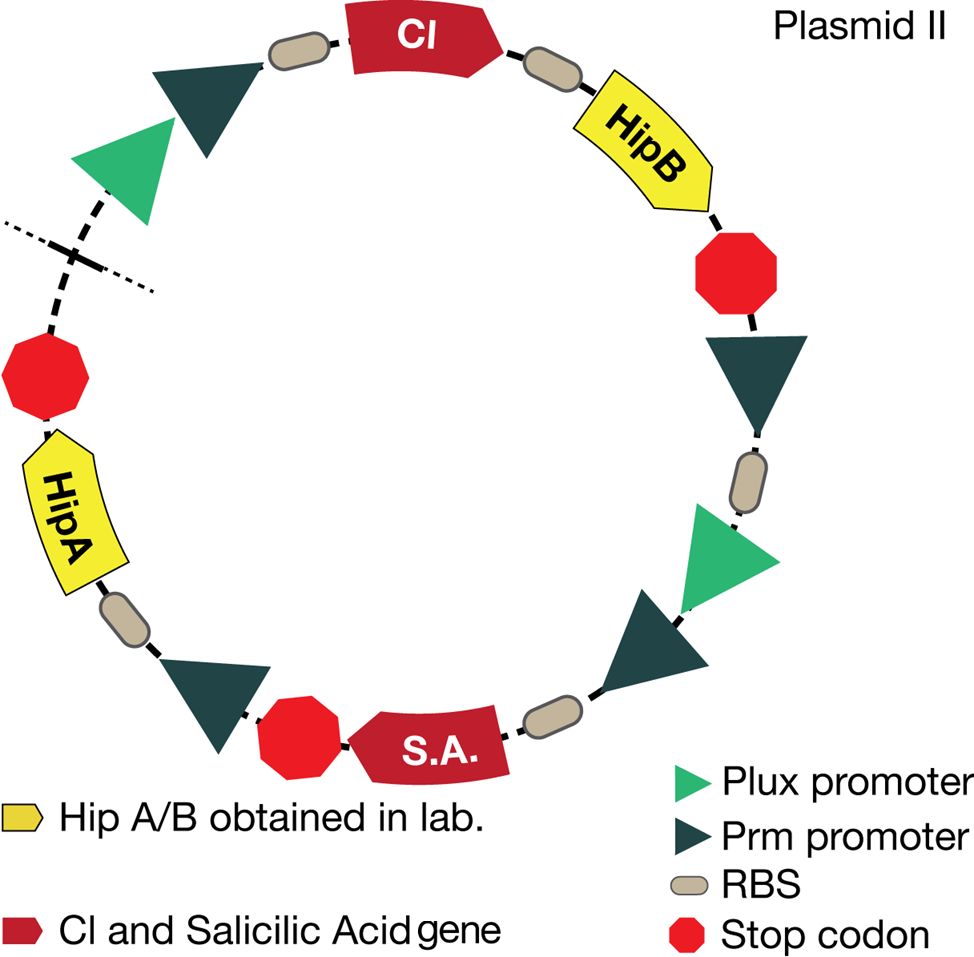Team:Colombia/Project/Experiments/Our Design
From 2012.igem.org
(→Our design) |
(→Our design) |
||
| Line 17: | Line 17: | ||
| - | -The second plasmid never changes because it´s aim is to alert the plant and ¨sleep¨ the bacteria. For alert the plant is produced salicylic acid that activates the | + | -The second plasmid never changes because it´s aim is to alert the plant and ¨sleep¨ the bacteria. For alert the plant, is produced salicylic acid that activates the plant's defense trough a systemic acquired reponse and for control the bacterial density, we introduced a [https://2012.igem.org/Team:Colombia/Project/Experiments/Pseudomonas toxin-antitoxin system (HipA-HipB)] that allows to reduce the quantity of active population when the pathogen is not detected and to control the bacterial population growth. |
Revision as of 05:14, 26 September 2012
Template:Https://2012.igem.org/User:Tabima
Our design
The purpose of our design is to generate genetically-modified bacteria with a "detect and alert" system. With this aim, we design two plasmids:
-The first plasmid has two parts, one part is changeable and the other one is always present. The changeable part is the pathogen detection module that changes depending on the organism that is going to be detected. This year we have worked in the detection of fungus (chitin detection) or Ralstonia spp. (3 OH-PAME detection), so detection module has that two options. Furthermore, the detection turns on the second plasmid (Plux promoter) by generating a signal (LuxI-LuxR complex), doesn’t matter which pathogen we want to detect the signal generated is always same because this part doesn’t change.
-The second plasmid never changes because it´s aim is to alert the plant and ¨sleep¨ the bacteria. For alert the plant, is produced salicylic acid that activates the plant's defense trough a systemic acquired reponse and for control the bacterial density, we introduced a toxin-antitoxin system (HipA-HipB) that allows to reduce the quantity of active population when the pathogen is not detected and to control the bacterial population growth.
Our design was made thanks to the use of mathematical models that helped us to check the best way if our design works and even it helped us to changed some parts from the first design proposed.
 "
"

